
Villain
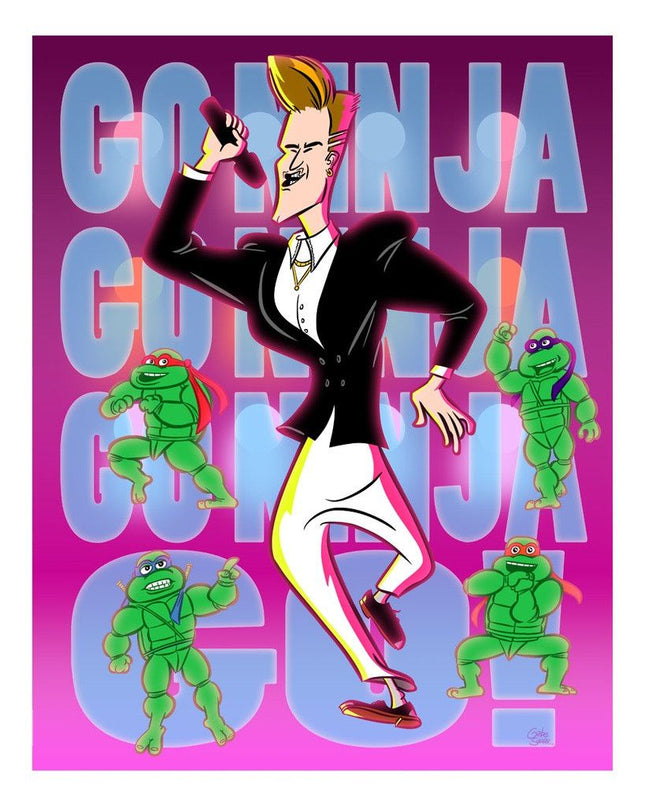
Gabe Swarr Go Ninja! Giclee Print by Gabe Swarr
Go Ninja! Limited Edition Giclee Print on Fine Art Paper by Gabe Swarr counter-culture street artist art. TMNT Teenage Mutant Ninja Turtles Vanilla Ice movie-inspired crossover.
$99.00
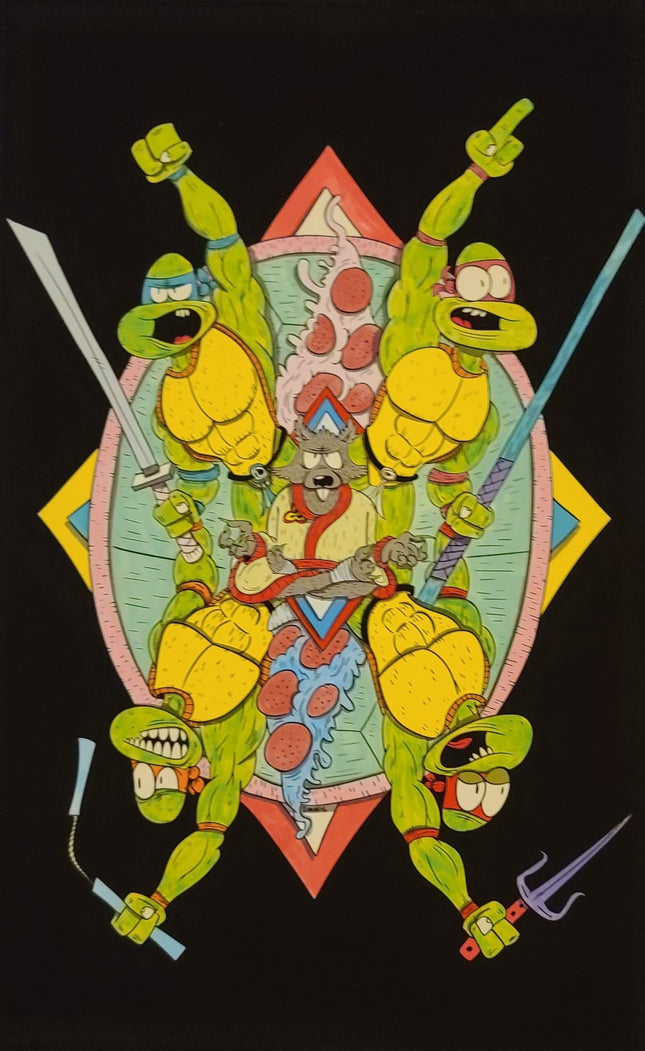
Other Artists Pizza Time! Giclee Print by Iam8bit
Pizza Time! Artwork Giclee Limited Edition Print on Fine Art Paper by Pop Culture Graffiti Artist Iam8bit.
$99.00
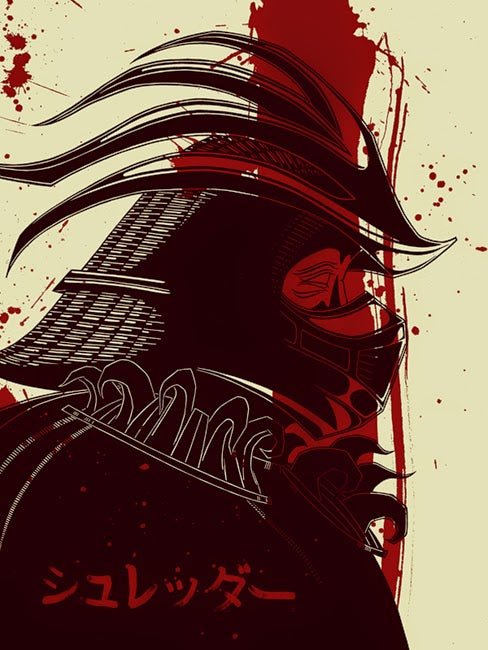
John Vogl The Shredder Silkscreen Print by John Vogl
The Shredder Limited Edition 2-Color Hand-Pulled Silkscreen Print on Fine Art Paper by John Vogl, Graffiti Street Artist Modern Pop Art. 2013 Signed & Numbered Limited Edition of 100 Artwork Size 18x24 TMNT, Teenage Mutant Ninja Turtles, Shredder, Villain, Super Hero, Comic, Warrior. Artistic Depiction of Iconic Villainy John Vogl's "The Shredder" is a captivating 2-color hand-pulled silkscreen print that deftly encapsulates the essence of modern pop art intertwined with graffiti street art's raw, dynamic spirit. This 2013 piece, part of a signed and numbered limited edition of 100, measures 18x24 inches and presents the infamous villain from the Teenage Mutant Ninja Turtles franchise in a stylistically stark and impactful design. In "The Shredder," Vogl captures the formidable aura of one of the most iconic antagonists in comic book history. The print is a visual homage to the character's legacy in pop culture, emphasizing his role as a symbol of power and resilience in the face of the titular heroes. By using a limited color palette, Vogl accentuates the dramatic features and armor of Shredder, conveying the character's menacing presence through bold lines and sharp contrasts. Vogl's meticulous silkscreen process imbues the artwork with a textural depth that resonates with the tactile nature of graffiti art. The choice of fine art paper as the medium adds sophistication to the piece, elevating it from a mere reproduction to a work of art that stands on its own. The splatter of red across the print not only suggests the violent undertones associated with the character but also adds a dynamic element to the composition, reminiscent of the spontaneity found in street art. Cultural Resonance and Collectibility "The Shredder" represents the intersection where the fantastical elements of superhero narratives meet the gritty realism of street culture. It embodies the cultural resonance of the TMNT series, celebrating its impact on generations of fans and its status as a staple of modern mythology. For collectors, owning one of the limited prints is not just an investment in a piece of art; it's a stake in the rich tapestry of a shared pop cultural memory. John Vogl's work, particularly "The Shredder," is a testament to the ongoing narrative of street pop art and graffiti Art, where the lines between high art and popular culture are continually blurred and redefined. The artwork is a powerful statement of the fusion of illustration, pop art sensibilities, and the rebellious energy of street art, showcasing Vogl's prowess as an artist who can navigate these realms with finesse and originality.
$99.00
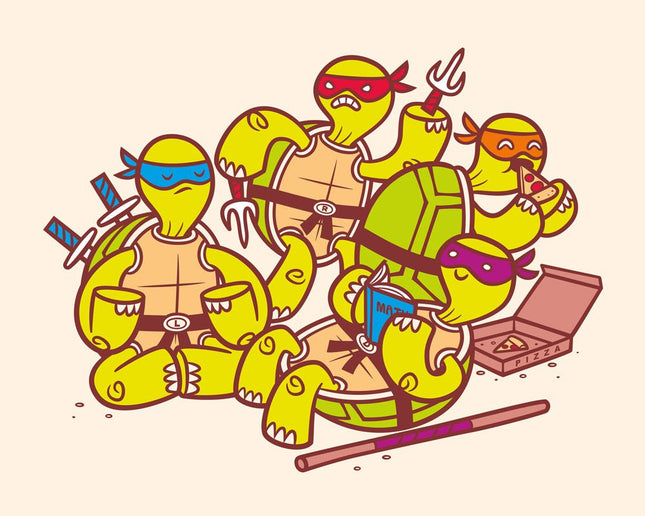
Philip Tseng Turtle Time Giclee Print by Philip Tseng
Turtle Time Limited Edition Giclee Print on Fine Art Paper by Philip Tseng counter-culture street artist art. TMNT Teenage Mutant Ninja Turtles eating pizza print. Turtle Time Giclee Print by Philip Tseng
$99.00
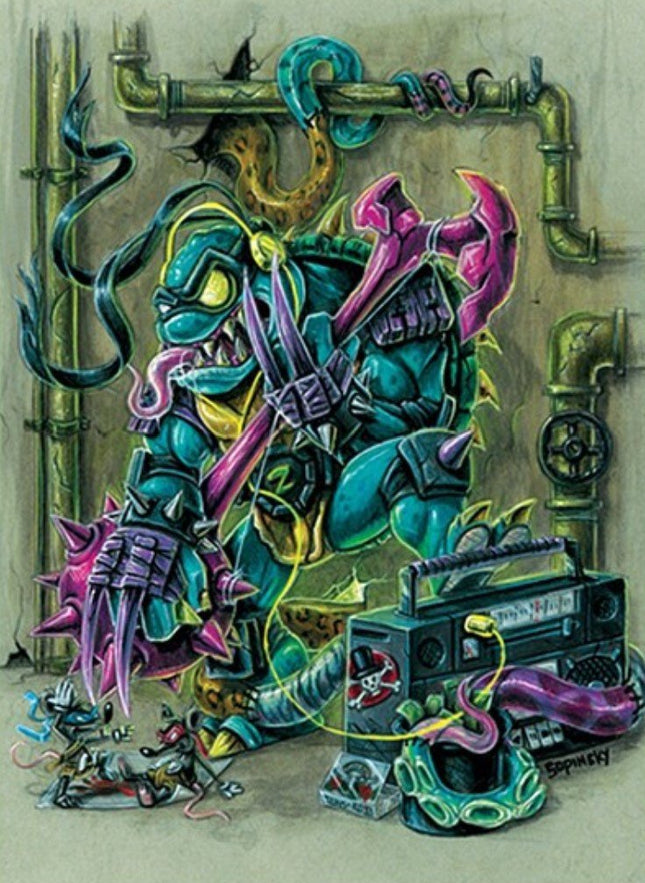
Brandon Sopinsky Sewer Shreddin Giclee Print by Brandon Sopinsky
Sewer Shreddin Artwork Giclee Limited Edition Print on Fine Art Paper by Pop Culture Graffiti Artist Brandon Sopinsky.
$129.00






